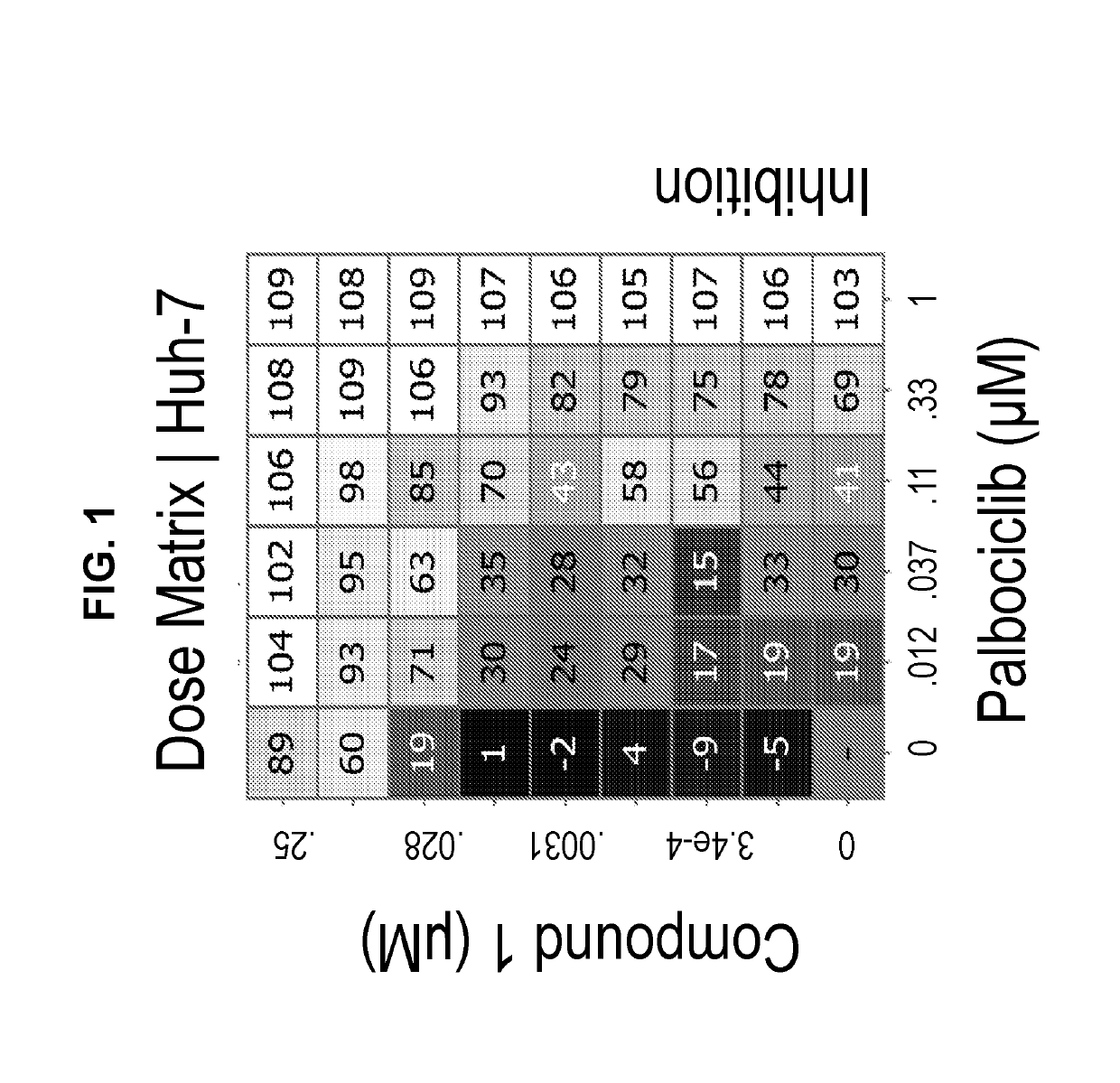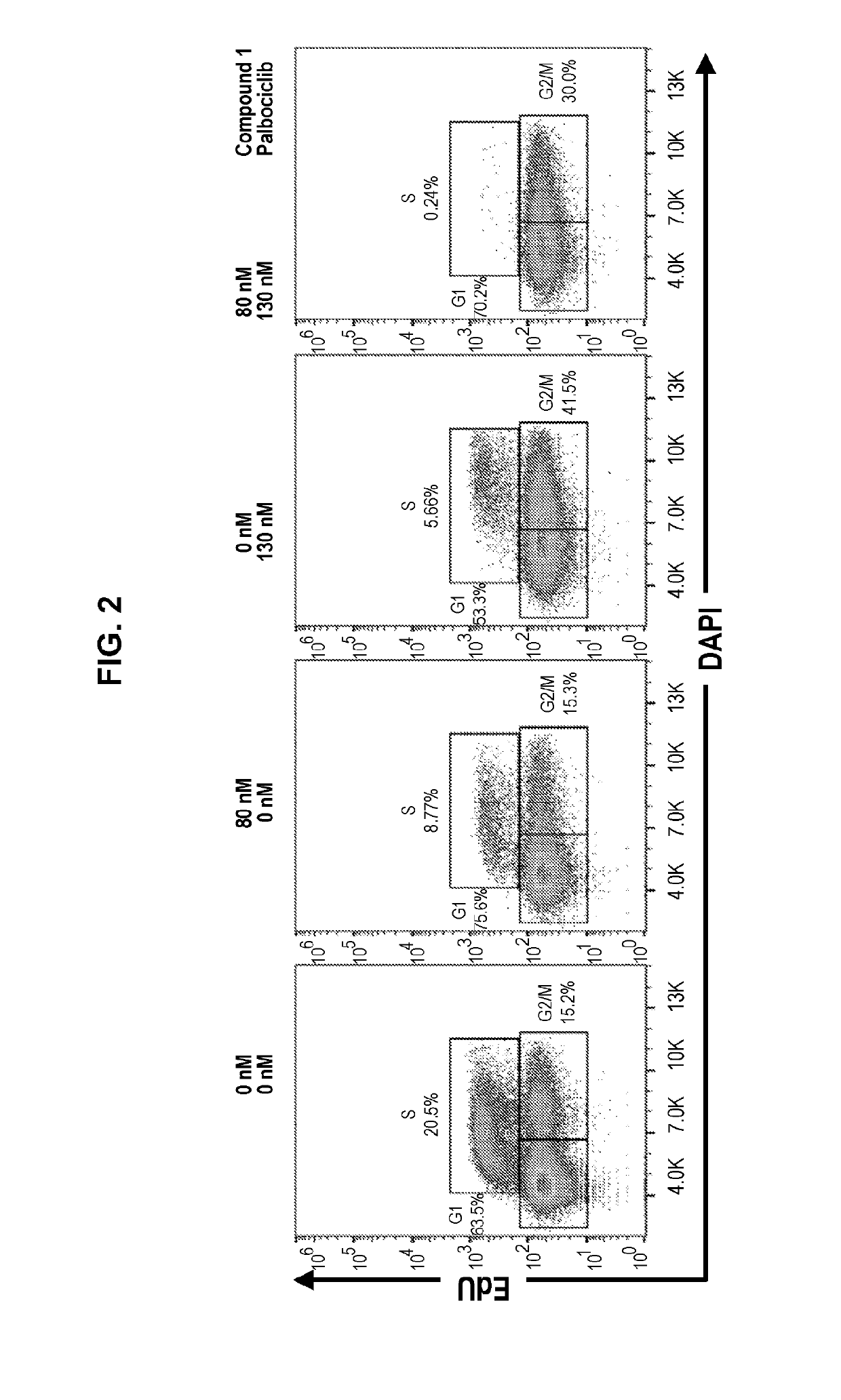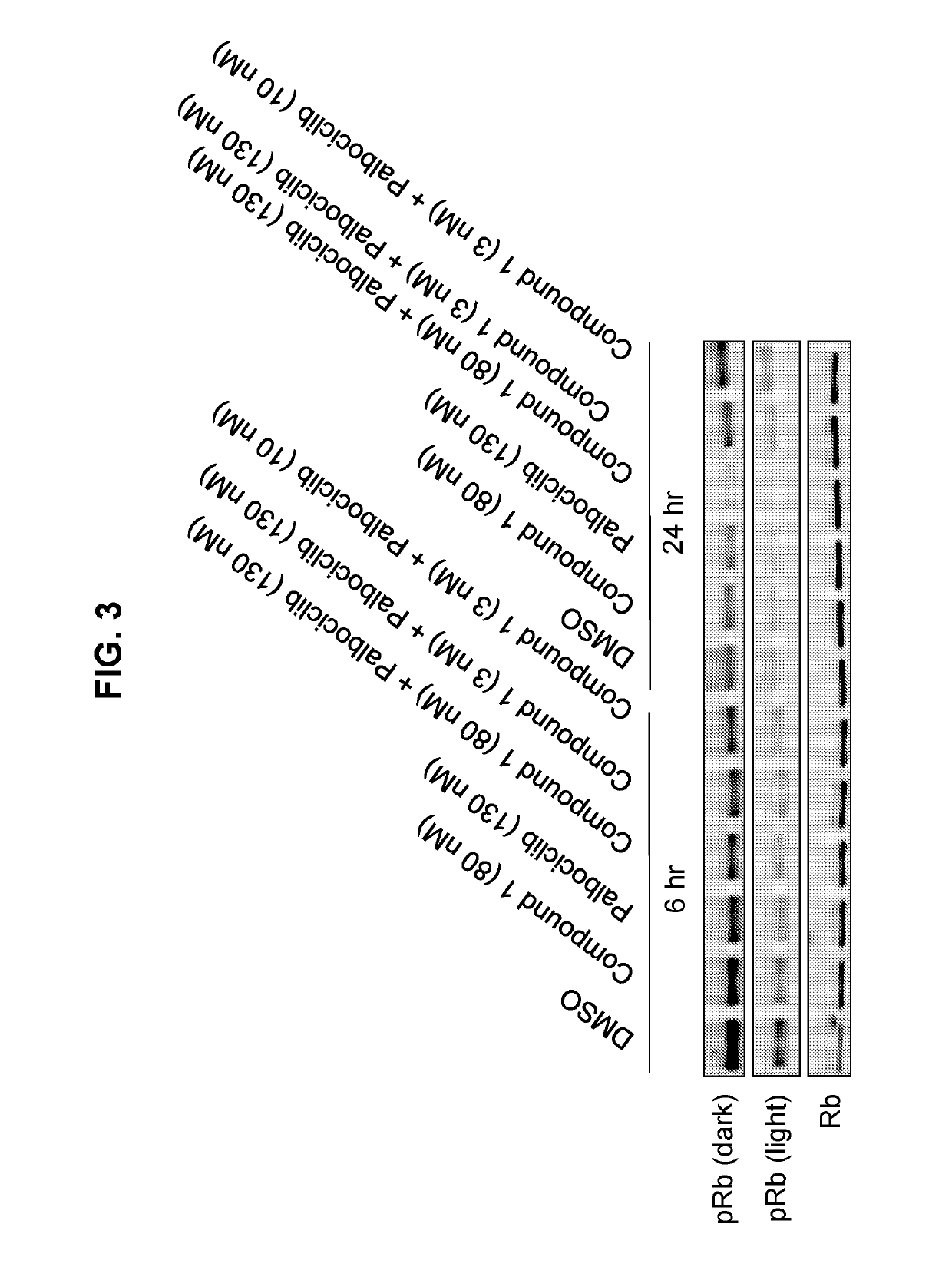Inhibitors of the fibroblast growth factor receptor 4 in combination with cyclin-dependent kinase inhibitors
- Summary
- Abstract
- Description
- Claims
- Application Information
AI Technical Summary
Benefits of technology
Problems solved by technology
Method used
Image
Examples
example 1
Palbociclib and Compound 1 Combination Studies in Cells
[0286]Combinations of FGFR4 and CDK4 / 6 inhibitors were evaluated in several signal seeking cell-based in vitro assays (data not shown). Screening was carried out using a variety of different standard anti-proliferative assays such as e.g., MTS, MTT, and Cell Titer Glo®. Many of the cell lines tested showed sensitivity, including in some instances partial response e.g., ZR-75-1, SW1116, TE-8, SNU-761, SNU-878, or in some instances synergistic response e.g., JHH7, MDA-MB-453, Huh-7. Not all cell lines showed sensitivity, which may be due to a variety of reasons. For example, a lack of sensitivity was observed in cell lines that were resistant to either agent alone, such as cell lines not having an intact FGFR4 signaling pathway e.g., JHH4. In other cell lines, limitations related to the in vitro assay format or time point of the readout may impact activity. As has been reported previously, palbociclib activity can be weak in short...
example 2
Growth Inhibition in Cells Treated with Palbociclib and / or Compound 1
[0290]Huh-7 cells were treated with the indicated concentrations of Compound 1, palbociclib, or a combination of Compound 1 and palbociclib for 72 hours. Following compound incubation, Edu was added to the culture medium at a final concentration of 10 μM for 2 hours. Cells were then harvested and washed with 1% BSA in PBS, pelleted, and resuspended in 100 μL of Click-iT™ fixative (Invitrogen, Click-iT™ Plus EdU Flow Cytometry Assay Kit). Cells were incubated with the fixative for 15 minutes at room temperature, protected from light. Next, the cells were washed as described previously, and resuspended in 100 μL of 1× Click-iT™ saponin-based permeabilization and wash reagent and incubated with the reagent for 15 minutes at room temperature, protected from light. 500 μL of Click-iT™ Plus reaction cocktail was then added and cells were incubated for 30 minutes at room temperature, protected from light. Next, cells were...
example 3
Palbociclib and Compound 1 Combination Studies in Female Balb / c Nude Mice Bearing Xenografts
[0292]Female Balb / c nude mice (Mus Musculus) between six and eight weeks old and weighing 18 to 20 g were used to evaluate the therapeutic efficacy of palbociclib and Compound 1 as monotherapies and in combination in Huh-7 liver cancer xenograft models. The tumor cells were maintained in vitro as a monolayer culture in DMEM medium supplemented with 10% heat inactivated fetal bovine serum at 37° C. in a 5% CO2 atmosphere. The tumor cells were routinely subcultured twice weekly by trypsin-EDTA treatment. The cells growing in an exponential growth phase were harvested and counted for tumor inoculation.
[0293]Each mouse was inoculated subcutaneously at the right flank with tumor cells (5×106) in 0.2 ml of PBS supplemented with Matrigel (50:50) for tumor development. The treatments were started on day 11 after tumor inoculation when the average tumor size reached approximately 183 mm3. Each group c...
PUM
| Property | Measurement | Unit |
|---|---|---|
| Time | aaaaa | aaaaa |
| Mass | aaaaa | aaaaa |
| Mass | aaaaa | aaaaa |
Abstract
Description
Claims
Application Information
 Login to View More
Login to View More - R&D
- Intellectual Property
- Life Sciences
- Materials
- Tech Scout
- Unparalleled Data Quality
- Higher Quality Content
- 60% Fewer Hallucinations
Browse by: Latest US Patents, China's latest patents, Technical Efficacy Thesaurus, Application Domain, Technology Topic, Popular Technical Reports.
© 2025 PatSnap. All rights reserved.Legal|Privacy policy|Modern Slavery Act Transparency Statement|Sitemap|About US| Contact US: help@patsnap.com



